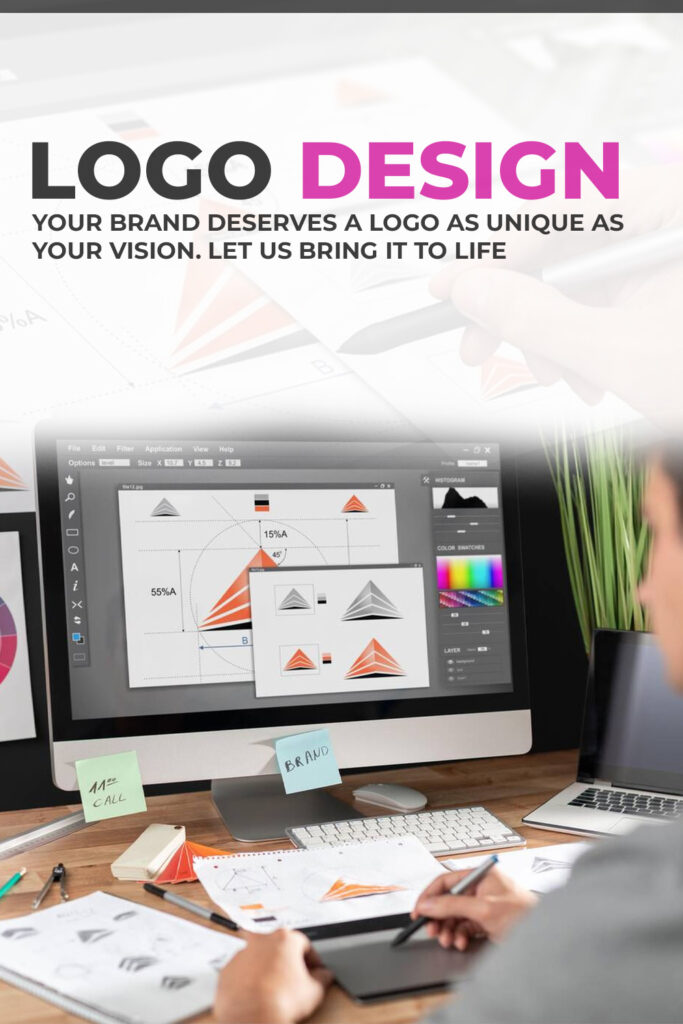Logo Legends: Creating Iconic Brands

Creating an iconic brand through logo design is both an art and a science. A well-crafted logo design company not only captures the essence of a brand but also leaves a lasting impression on its audience. In this comprehensive guide, we delve into the strategies and techniques that can help your logo stand out in a crowded marketplace. Understanding the Essence of Iconic Logos The Role of Simplicity in Design A hallmark of iconic logos is their simplicity. Simple logos are easily recognizable and memorable. Think of brands like Apple, Nike, and McDonald’s. Their logos are straightforward yet powerful. When designing a logo, focus on clean lines, minimalistic elements, and clear shapes. Avoid clutter and unnecessary details that can distract from the core message. The Power of Versatility An effective logo should be versatile. It needs to look great on a variety of mediums and sizes, from business cards to billboards. Versatility ensures that your logo maintains its integrity and impact regardless of where it’s displayed. Consider creating versions of your logo that work in both color and black-and-white, as well as in different sizes. Timelessness Over Trends While it’s tempting to follow design trends, an iconic logo should stand the test of time. Timeless logos avoid gimmicks and focus on enduring design principles. Look at brands like Coca-Cola and IBM; their logos have remained largely unchanged for decades. Strive for a design that won’t feel outdated in a few years. Key Elements of Iconic Logo Design Color Psychology in Logo Design Color plays a crucial role in logo design. Different colors evoke different emotions and associations. For instance, blue is often associated with trust and professionalism, while red can evoke excitement and passion. Choose colors that align with your brand’s personality and message. Additionally, ensure your color choices are appropriate for your target audience and industry. Typography Matters The typeface you choose for your logo communicates a lot about your brand. Serif fonts can convey tradition and reliability, while sans-serif fonts are often seen as modern and clean. Typography should be legible and appropriate for your brand’s tone. Custom typefaces can add a unique touch to your logo, making it truly one-of-a-kind. Incorporating Symbols and Icons Symbols and icons can enhance a logo by adding an extra layer of meaning. When selecting or designing symbols, ensure they are relevant to your brand and easily recognizable. Symbols should complement the text and not overpower it. The combination of text and icon should work harmoniously to create a cohesive logo. The Logo Design Process Research and Inspiration Before you start designing, immerse yourself in research. Study your competitors, understand your target audience, and gather inspiration from successful logos. Research helps you identify what works in your industry and what sets your brand apart. Sketching and Conceptualizing Begin the design process with sketches. Sketching allows you to explore a wide range of ideas quickly. Don’t worry about perfection at this stage; focus on getting your concepts on paper. Once you have several strong ideas, refine them and start considering how they will look in a digital format. Digital Creation and Refinement Using design software, bring your best sketches to life. Experiment with different fonts, colors, and layouts. Refinement is key—take the time to tweak and adjust your design until it’s perfect. Get feedback from others and be willing to make changes based on constructive criticism. Testing Across Mediums Before finalizing your logo, test it across various mediums. Print it out, view it on different screens, and see how it looks in both small and large sizes. Testing ensures your logo maintains its impact and clarity in all contexts. Case Studies of Iconic Logos Apple: The Evolution of Simplicity Apple’s logo is a prime example of simplicity and versatility. Over the years, it has evolved from a complex illustration to the sleek, iconic apple shape we recognize today. The logo’s minimalistic design reflects Apple’s commitment to user-friendly, cutting-edge technology. Nike: The Power of Symbolism Nike’s “Swoosh” is one of the most recognizable logos in the world. It’s a perfect example of how a simple symbol can carry significant meaning. The swoosh represents movement and speed, perfectly aligning with Nike’s brand identity. The logo’s adaptability across products and marketing materials showcases its versatility. Coca-Cola: Timeless and Consistent Coca-Cola’s logo has undergone minor tweaks over the years, but its core design has remained consistent. The flowing script and distinctive red color embody the brand’s heritage and global recognition. Coca-Cola’s commitment to maintaining its iconic logo underscores the importance of timeless design. Conclusion: Crafting Your Iconic Logo Creating an iconic logo requires a deep understanding of design principles, brand identity, and market trends. By focusing on simplicity, versatility, and timelessness, you can craft a logo that not only stands out but also endures. Remember to invest in thorough research, embrace creativity, and refine your design through testing. An iconic logo is a powerful asset that can elevate your brand and leave a lasting impression on your audience.
